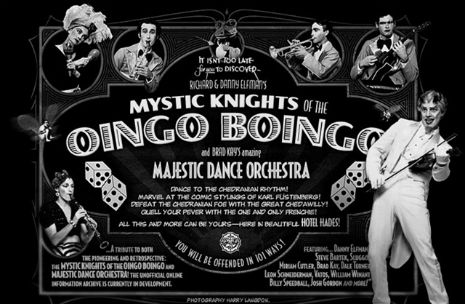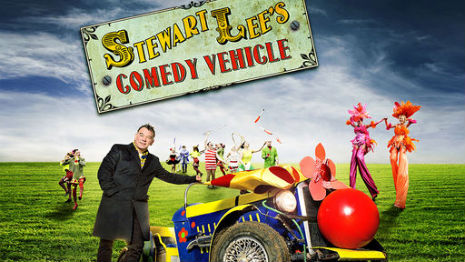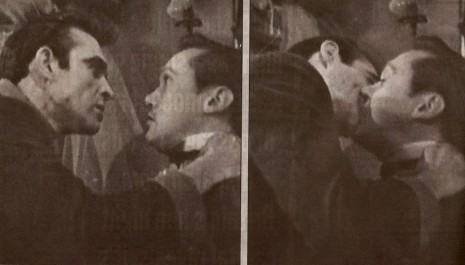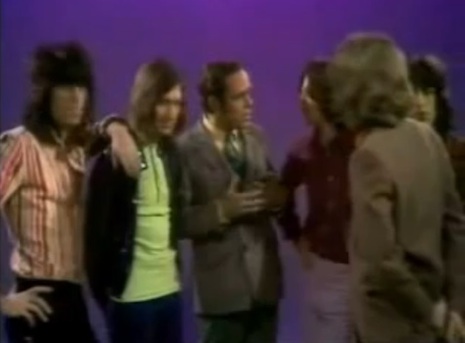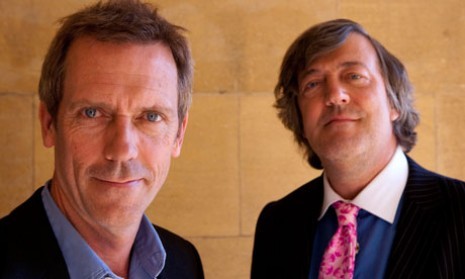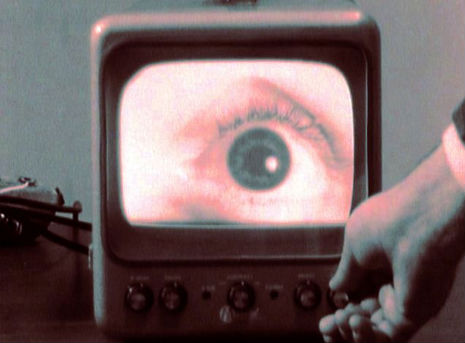
I once produced a series called Banned in the U.K., which was based on the premise that we can learn more about a society through what it bans that by what it permits. This week, the issue of censorship has highlighted the difference of what is permitted when viewing extreme violence as fact and fiction.
Dangerous Mind‘s Niall O’Conghaile wrote about the British Board of Film Classification’s decision to ban Tom Six’s sequel The Human Centipede II on the grounds that it “poses a real, as opposed to a fanciful, risk that harm is likely to be caused to potential viewers.”
The principal focus of The Human Centipede II (Full Sequence) is the sexual arousal of the central character at both the idea and the spectacle of the total degradation, humiliation, mutilation, torture, and murder of his naked victims….
...There is little attempt to portray any of the victims in the film as anything other than objects to be brutalised, degraded and mutilated for the amusement and arousal of the central character, as well as for the pleasure of the audience.
While the BBFC has banned Brits from viewing fictional acts of extreme and sexual violence, Channel 4 television has taken the brave decision to air raw footage (filmed on a cell ‘phone) of allegedly Sri Lankan troops systematically murdering and committing acts of sexual violence against its population in a documentary called Sri Lanka’s Killing Fields.
The material has been described as “the most horrific footage [Channel 4] has ever broadcast”. An extract from the video was aired in August 2009, which showed naked, bound men being executed with a shot to the back of the head by what appears to be Sri Lankan soldiers. This material was edited as it was considered “too gruesome” to be broadcast pre-watershed. Now the footage will be transmitted at length next Tuesday at 11pm:
Sri Lanka’s Killing Fields includes full-length videos of naked and bound Tiger prisoners kneeling whilst they are shot in the back of their heads by men in army uniforms. When extracts of some of these videos were first shown on Channel 4 News the Sri Lankan government denounced them as fake - and have refused to accept they are real - despite being authenticated by UN specialists. In new footage, a Tiger prisoner is shown tied to a coconut tree. The same prisoner is captured in a series of photos - at first alive, threatened with a knife and then dead and covered with blood.
Further videos show evidence of systemic murder, abuse and sexual violence - women’s bodies stripped of their clothes being dumped into trucks by soldiers. The film includes an interview with a woman who, with a group of civilians, handed herself and daughter over to government forces. She claims they were both raped; she witnessed others being raped, she heard screaming and shots and never saw them again.
This week, Head of News and Current Affairs at Channel 4, Dorothy Byrne defended her decision to screen the film in a radio interview:
“I believe it is absolutely justified. The UN has reported that there is credible evidence that actual war crimes took place.
“This is not just a TV programme, this is evidence. If we don’t show it and the Sri Lankan government say it never happened – how are you the viewer, a member of the public, able to make up your mind, unless you see it yourself.
“We felt we had to show it as overwhelming evidence of potential war crimes which need investigating.
“I would like to be able to say we will never again show footage again like this. I hope it is the first and last time we have to do it.”
Byrne took the decision to show the film “after serious and careful consideration.”
“This dossier of visual evidence of alleged war crimes and crimes against humanity committed by forces of the government of Sri Lanka is of the greatest possible public interest. We believe that screening it is the only way to enable viewers to make their own informed judgments about what happened.”
Byrne is right to show the footage as “evidence”, in the same way the films of Auschwitz and Belsen were “evidence” of the atrocities committed. But it will lead to people asking why it is acceptable to broadcast genuine material of “gruesome” violence, and sexual assault, while it is not acceptable to screen fictional material, like the next Tom Six movie?
Shouldn’t it be more troubling to watch film of actual murder, rather than fictional?
The screening also opens “a door to which there is no way of closing” for once one news agency shows such footage, what is to stops others following suit?
There is usually a protocol to showing shootings in news footage: the camera freezes before the moment the gun is fired, then cuts to the dead body. This explains in simple terms what has happened. If this protocol is abandoned then the stakes are upped in terms of what a news channel can offer to attract viewers - and let’s be clear, viewing figures drive scheduling, which drives programs and their commissioning, and if real violence can deliver column inches and a healthy viewing figure, then who is going to say “no” to cell ‘phone footage of other atrocities?
But there is also a more troubling issue - would this material have been screened if it was British citizens that had been shot in the head? Do we treat foreign nations with dignity when it comes to reporting on their lives? Or do we use them as victims for our own infotainment?
This is a very tricky area but I think Byrne is right, for it is “evidence” that Channel 4 is presenting and there is a moral duty to screen it, which is what makes this footage exceptional, and important.
Sri Lanka’s Killing Fields is broadcast on Channel 4 on June 14 at 23.05hours, details here.
Below is the original Channel 4 News report on the Sri Lankan atrocities - please note some viewers may find this clip disturbing, as it contains footage of prisoners being killed.






